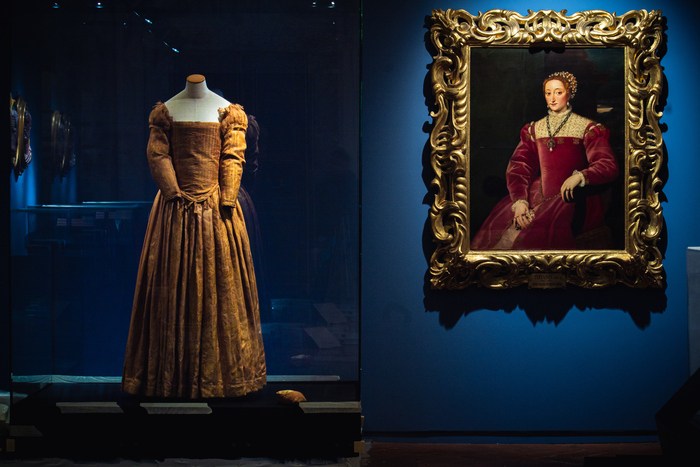Icon of beauty, queen of fashion and customs of the time, influential political personality and great art lover: the palace of Palazzo Pitti in Florence celebrates Eleonora di Toledo, wife of Cosimo de' Medici, with a large exhibition displaying paintings, drawings, tapestries, dresses, jewels and precious stones linked in some way to the sixteenth-century lady.
There are over 100 works, some from international loans, for the exhibition 'Eleonora di Toledo and the invention of the Medici court in Florence' organized by the Uffizi Galleries and curated by the art historian and professor at New York University Florence Bruce Edelstein (February 7 to May 14).
The exhibition is made up of seven sections which exhibits, among other works, the portrait of Eleonora di Toledo attributed to Alessandro Allori and coming from Berlin, the drawing for the ephemeral monument to Giovanni delle Bande Nere by Niccolò Tribolo (loan from the Musée du Louvre) and a female dress, probably worn by one of Eleonora's bridesmaids when she was received in the Vatican in 1560 by Pope Pius IV, made by the workshop of Agostino da Gubbio.
The first chapter of the exhibition recounts Eleonora's childhood in Naples at the beginning of the sixteenth century and proposes, among the various works, the portrait of Pedro de Toledo as a knight of the order of Santiago, by Tiziano Vecellio.
The section dedicated to the
arrival in Florence as Cosimo's wife and that of the couple's eleven children who welcomes the portrait of Eleonora di Toledo with her son Giovanni by Agnolo Bronzino.
The exhibition then focuses on Eleonora's interest in art and in particular in the works produced by the Medici Arazzeria: on display is the tapestry from the workshop of Nicolas Karcher, woven from a cartoon by Francesco Salviati, Lamentation over the Dead Christ .
Other sections tell of her influence on the transformation of fashion in Florence and her love of gardens.
The most important work among the duchess's commissions was the Boboli Gardens.
on display the tapestry from the workshop of Nicolas Karcher, woven from a cartoon by Francesco Salviati, Lamentation over the dead Christ.
Other sections tell of his influence on the transformation of fashion in Florence and his love for gardens.
The most important work among the duchess's commissions was the Boboli Gardens.
on display the tapestry from the workshop of Nicolas Karcher, woven from a cartoon by Francesco Salviati, Lamentation over the dead Christ.
Other sections tell of his influence on the transformation of fashion in Florence and his love for gardens.
The most important work among the duchess's commissions was the Boboli Gardens.
The last chapter of the exhibition is dedicated to Eleonora's posthumous fortune and her cultural legacy.
The director of the Uffizi Galleries recalled that "together with Vittoria Colonna, Eleonora was also one of the great female patrons, not only of artists but also of men of letters and philologists. Not only that.
Like the Duchess of Mantua Isabella d'Este, also the Spaniard who moved to Florence had a penchant for clothing and was a real arbitra elegancearum, almost an Anna Wintour of the period".
(HANDLE).

